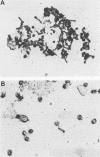Abstract
The hormonal status of rats affected vaginal infection with Candida albicans. Four hours after infection viable counts were higher and germ tubes were longer in those animals in estrous than in other animals. However, the infection was not maintained with the change in epithelial cell type which occurred as part of the estrous cycle. Estrogen dosing following ovariectomy predisposed toward infection, while progesterone dosing did not. In rats injected with progesterone, germ tube clumping was seen, leukocytes were present, and elimination occurred before hyphal growth was evident. In rats injected with estrogen, however, infection was maintained, with hyphal growth extending throughout the cornified epithelial layer. Vaginal washings from rats dosed with estrogen promoted elongation of germ tubes in vitro to a greater extent than washings from other rats. Preincubation of blastospores in progesterone and subsequent infection of rats in pseudoestrous promoted clumping of germ tubes in the vagina. Strains of C. albicans varied in their virulence, which correlated with their ability to produce germ tubes in vitro. Loss of virulence occurred on subculture of a clinical isolate.
Full text
PDF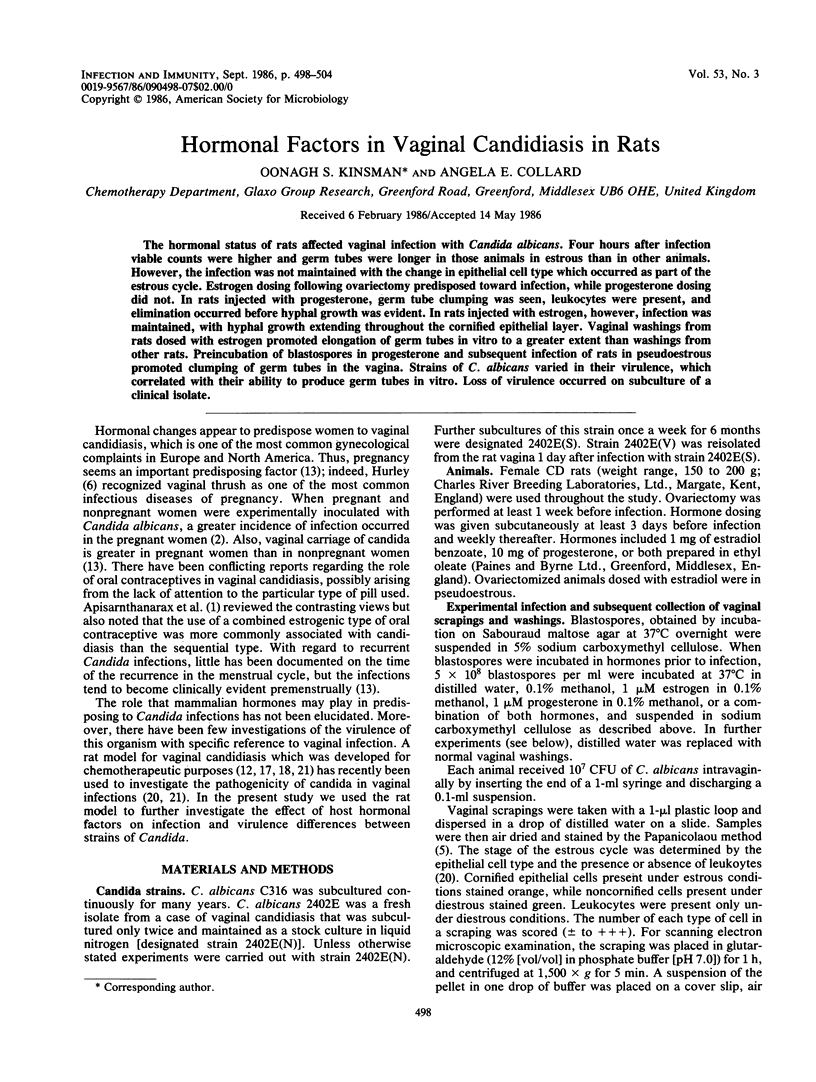
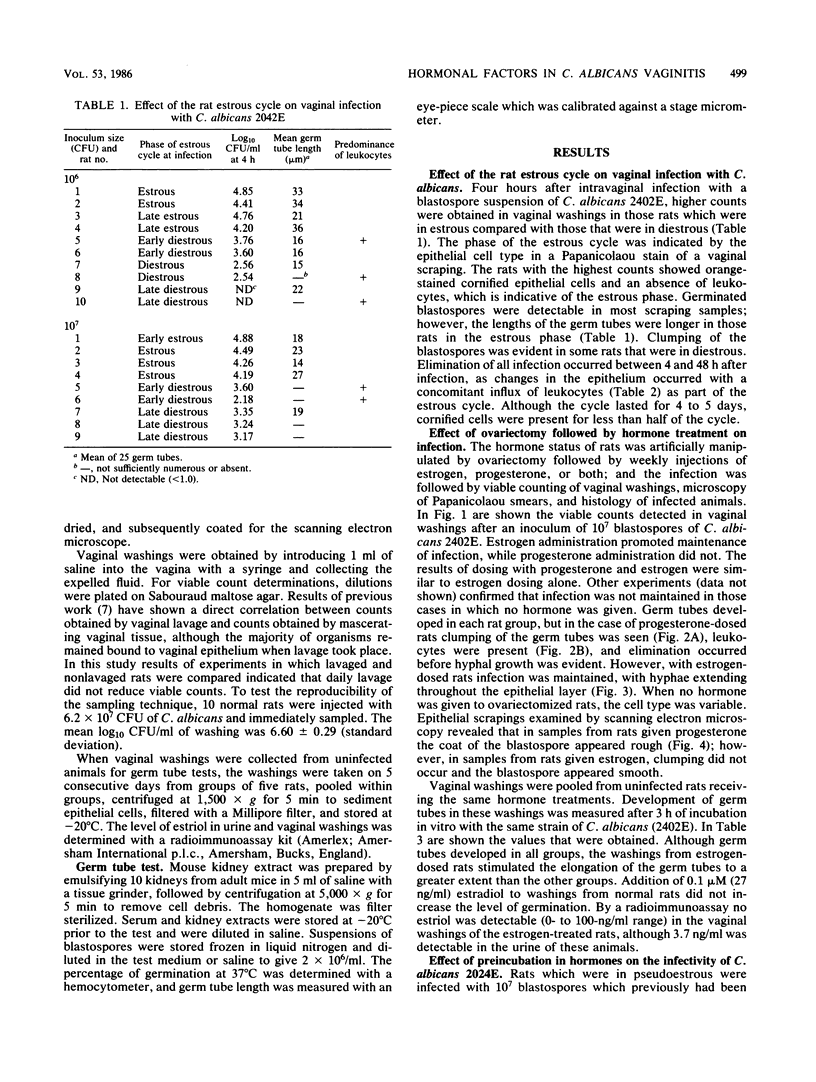
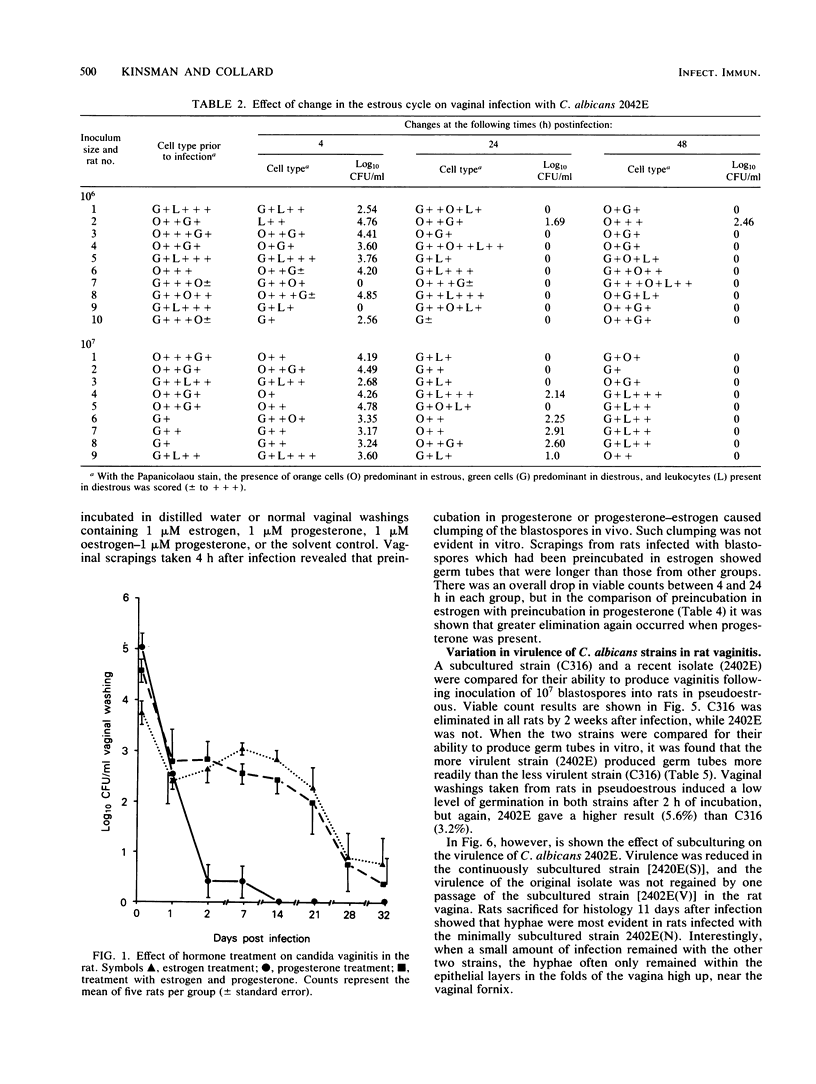
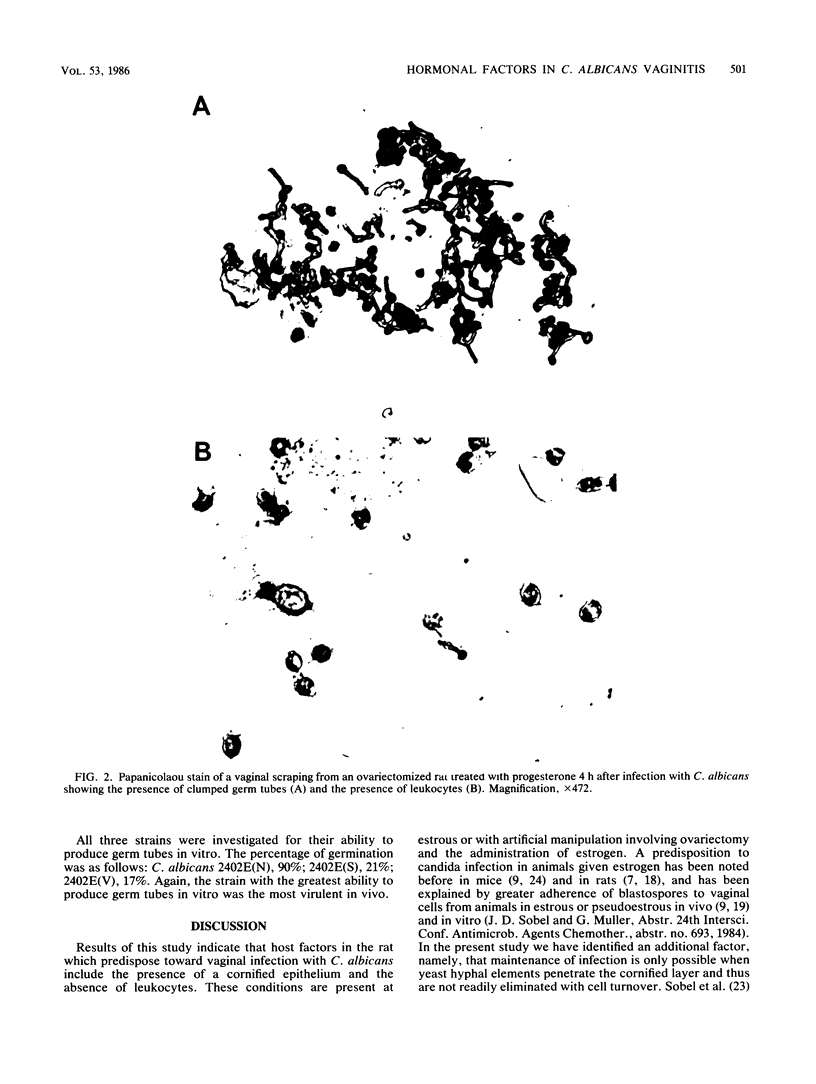
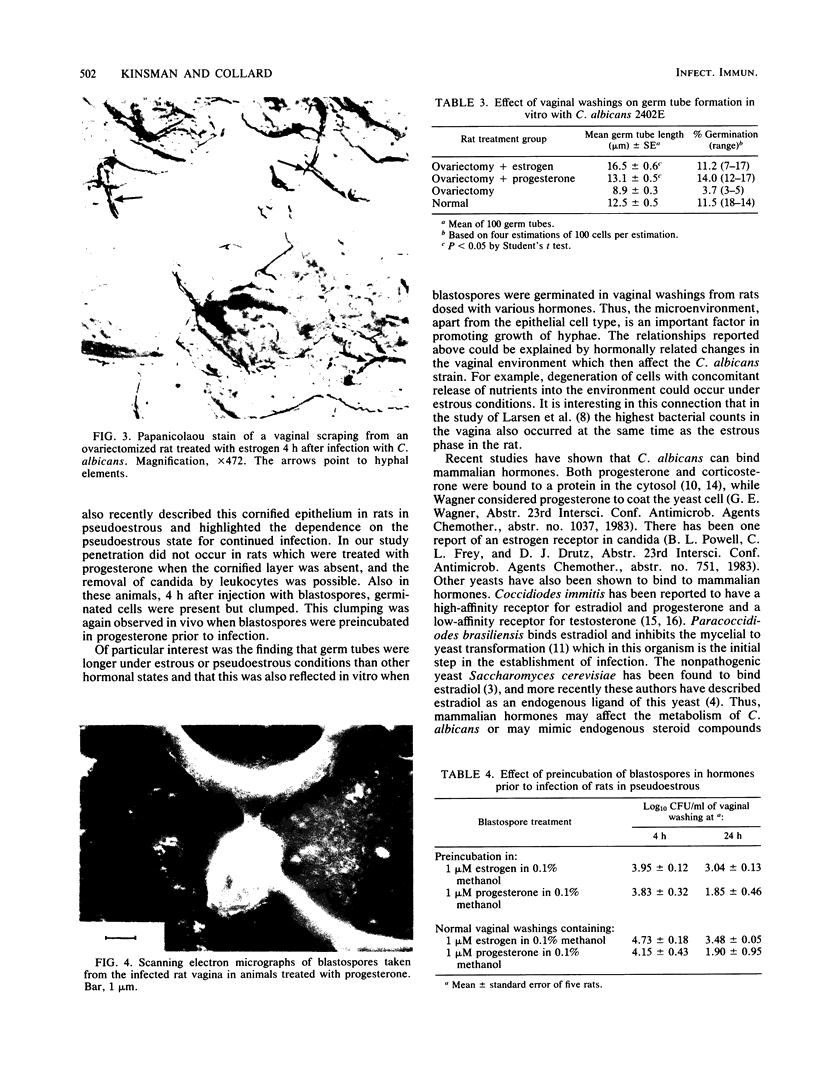
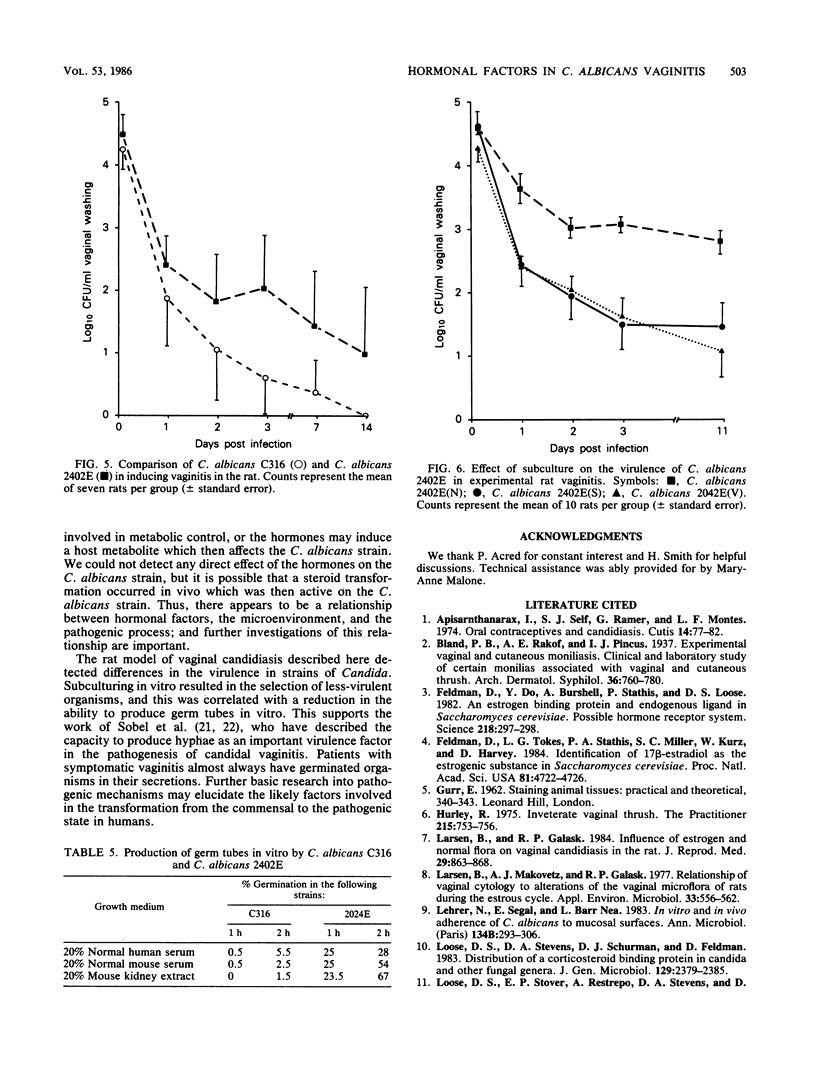
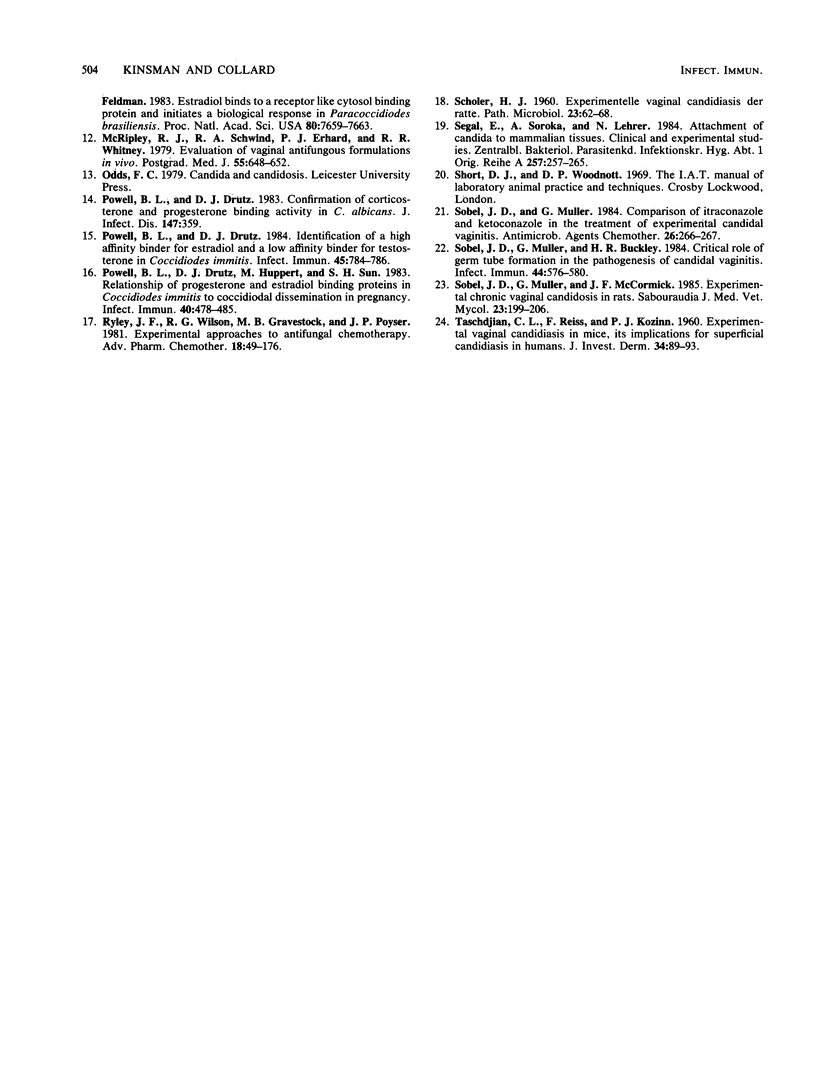
Images in this article
Selected References
These references are in PubMed. This may not be the complete list of references from this article.
- Feldman D., Do Y., Burshell A., Stathis P., Loose D. S. An estrogen-binding protein and endogenous ligand in Saccharomyces cerevisiae: possible hormone receptor system. Science. 1982 Oct 15;218(4569):297–298. doi: 10.1126/science.6289434. [DOI] [PubMed] [Google Scholar]
- Feldman D., Tökés L. G., Stathis P. A., Miller S. C., Kurz W., Harvey D. Identification of 17 beta-estradiol as the estrogenic substance in Saccharomyces cerevisiae. Proc Natl Acad Sci U S A. 1984 Aug;81(15):4722–4726. doi: 10.1073/pnas.81.15.4722. [DOI] [PMC free article] [PubMed] [Google Scholar]
- Hurley R. Inveterate vaginal thrush. Practitioner. 1975 Dec;215(1290):753–756. [PubMed] [Google Scholar]
- Larsen B., Galask R. P. Influence of estrogen and normal flora on vaginal candidiasis in the rat. J Reprod Med. 1984 Dec;29(12):863–868. [PubMed] [Google Scholar]
- Larsen B., Markovetz A. J., Galask R. P. Relationship of vaginal cytology to alterations of the vaginal microflora of rats during the estrous cycle. Appl Environ Microbiol. 1977 Mar;33(3):556–562. doi: 10.1128/aem.33.3.556-562.1977. [DOI] [PMC free article] [PubMed] [Google Scholar]
- Lehrer N., Segal E., Barr-Nea L. In vitro and in vivo adherence of Candida albicans to mucosal surfaces. Ann Microbiol (Paris) 1983 Sep-Oct;134B(2):293–306. doi: 10.1016/s0769-2609(83)80042-8. [DOI] [PubMed] [Google Scholar]
- Loose D. S., Stevens D. A., Schurman D. J., Feldman D. Distribution of a corticosteroid-binding protein in Candida and other fungal genera. J Gen Microbiol. 1983 Aug;129(8):2379–2385. doi: 10.1099/00221287-129-8-2379. [DOI] [PubMed] [Google Scholar]
- Loose D. S., Stover E. P., Restrepo A., Stevens D. A., Feldman D. Estradiol binds to a receptor-like cytosol binding protein and initiates a biological response in Paracoccidioides brasiliensis. Proc Natl Acad Sci U S A. 1983 Dec;80(24):7659–7663. doi: 10.1073/pnas.80.24.7659. [DOI] [PMC free article] [PubMed] [Google Scholar]
- McRipley R. J., Erhard P. J., Schwind R. A., Whitney R. R. Evaluation of vaginal antifungal formulations in vivo. Postgrad Med J. 1979 Sep;55(647):648–652. doi: 10.1136/pgmj.55.647.648. [DOI] [PMC free article] [PubMed] [Google Scholar]
- Powell B. L., Drutz D. J. Confirmation of corticosterone and progesterone binding activity in Candida albicans. J Infect Dis. 1983 Feb;147(2):359–359. doi: 10.1093/infdis/147.2.359. [DOI] [PubMed] [Google Scholar]
- Powell B. L., Drutz D. J., Huppert M., Sun S. H. Relationship of progesterone- and estradiol-binding proteins in Coccidioides immitis to coccidioidal dissemination in pregnancy. Infect Immun. 1983 May;40(2):478–485. doi: 10.1128/iai.40.2.478-485.1983. [DOI] [PMC free article] [PubMed] [Google Scholar]
- Powell B. L., Drutz D. J. Identification of a high-affinity binder for estradiol and a low-affinity binder for testosterone in Coccidioides immitis. Infect Immun. 1984 Sep;45(3):784–786. doi: 10.1128/iai.45.3.784-786.1984. [DOI] [PMC free article] [PubMed] [Google Scholar]
- Ryley J. F., Wilson R. G., Gravestock M. B., Poyser J. P. Experimental approaches to antifungal chemotherapy. Adv Pharmacol Chemother. 1981;18:49–176. doi: 10.1016/s1054-3589(08)60254-9. [DOI] [PubMed] [Google Scholar]
- SCHOLER H. J. [Experimental vaginal candidiasis of the rat]. Pathol Microbiol (Basel) 1960;23:62–68. [PubMed] [Google Scholar]
- Segal E., Soroka A., Lehrer N. Attachment of Candida to mammalian tissues--clinical and experimental studies. Zentralbl Bakteriol Mikrobiol Hyg A. 1984 Jul;257(2):257–265. [PubMed] [Google Scholar]
- Sobel J. D., Muller G., Buckley H. R. Critical role of germ tube formation in the pathogenesis of candidal vaginitis. Infect Immun. 1984 Jun;44(3):576–580. doi: 10.1128/iai.44.3.576-580.1984. [DOI] [PMC free article] [PubMed] [Google Scholar]
- Sobel J. D., Muller G. Comparison of itraconazole and ketoconazole in the treatment of experimental candidal vaginitis. Antimicrob Agents Chemother. 1984 Aug;26(2):266–267. doi: 10.1128/aac.26.2.266. [DOI] [PMC free article] [PubMed] [Google Scholar]
- Sobel J. D., Muller G., McCormick J. F. Experimental chronic vaginal candidosis in rats. Sabouraudia. 1985 Jun;23(3):199–206. doi: 10.1080/00362178585380301. [DOI] [PubMed] [Google Scholar]
- TASCHDJIAN C. L., REISS F., KOZINN P. J. Experimental vaginal candidiasis in mice; its implications for superficial candidiasis in humans. J Invest Dermatol. 1960 Feb;34:89–94. [PubMed] [Google Scholar]



